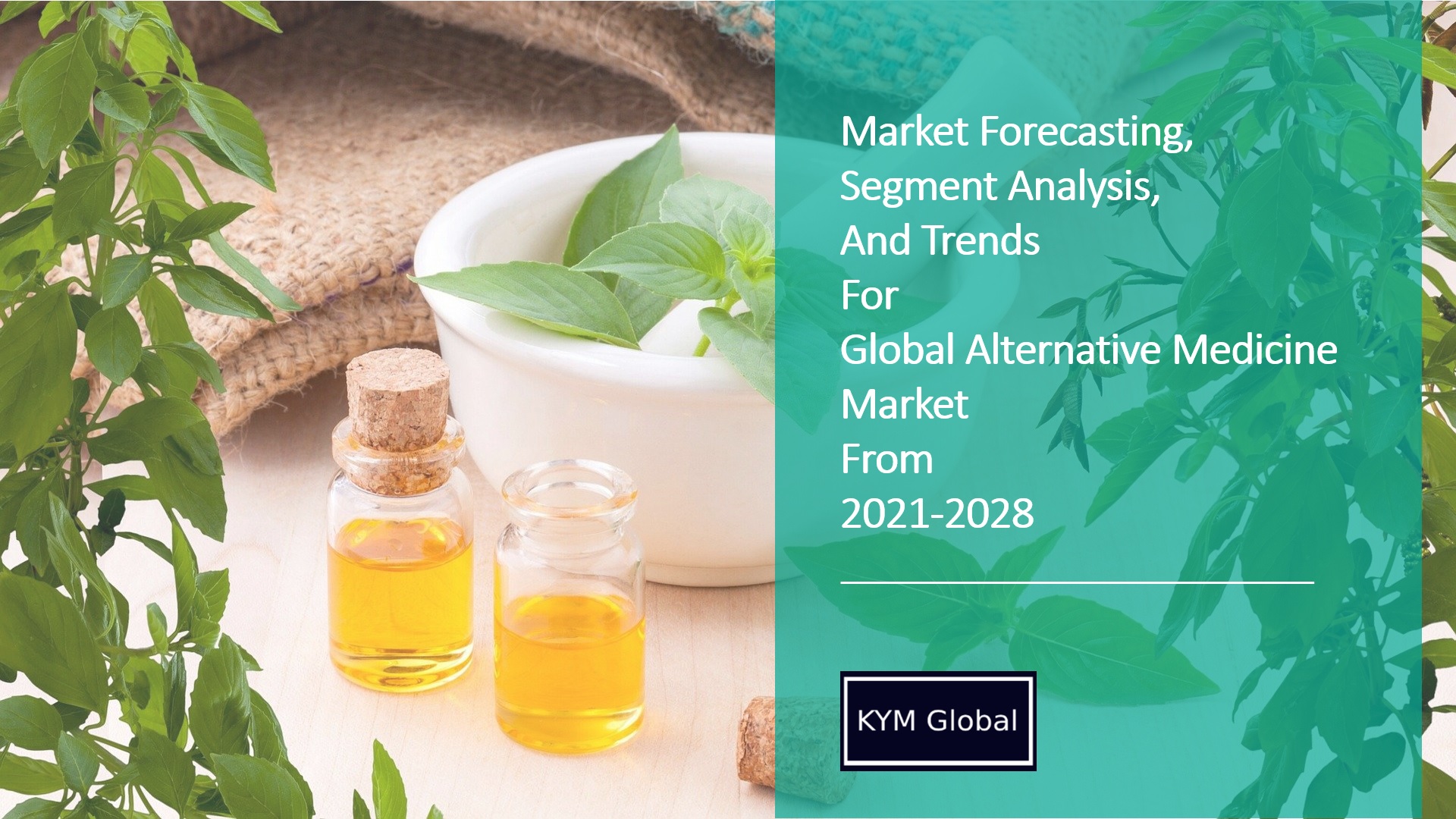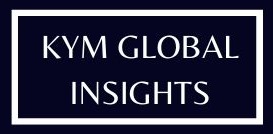Introducing Single Price Syndicate Report

GLOBAL ALTERNATIVE MEDICINE MARKET
MARKET ANALYSIS & SEGMENT FORECAST FROM 2021 TO 2028By Drug Class: Herbal Products, Nutraceutical Products, Probiotics, and Others, By Dosage Form: Tablets, Powder, Syrup, Capsules, Teas, Extracts, and Others, By Disease Indication: Arthritis, Cancer, Asthma, Diabetes, Cardiology, Neurology, and Others, By Distribution Channel: Online Pharmacies, Retail Pharmacies, Hospital Pharmacies, and Others, By Region: North America, Europe, Asia-Pacific, South America, and ME&A And Segment Forecasts, 2021 - 2028
Published Date: TBD
Base Year for Estimate: 2020
Report ID: KYMGLHC04
Format: Electronic (PDF)
Number of Pages: TBD
Price: USD 5000
Market Outlook
Market Size & Forecast (2021-2028)
Segment Analysis (2021-2028)
Market Drivers & Restraints
COVID-19 Impact Analysis
Competitive Landscape & Company Profiles
KOL Commentary (Primary Research)
Session With Analyst
Alternative medicine is a term that refers to a natural therapeutic approach that is not the same as traditional or pharmaceutical medicine. Non-mineral, non-vitamin, and natural substances are used in alternative medicine. Magnetic treatment, herbal therapies, yoga, mud therapy, and oil massage therapy, as well as deep breathing exercises, osteopathic manipulation, and meditation, are examples of alternative therapies. Alternative medications and treatments are utilized in the treatment of chronic illnesses, neurological disorders, pain relief, and depression, among other things.
Alternative medicine refers to a variety of health-related goods, procedures, and practices. Alternative medicine focuses on using energy alignment, herbal supplementation, and other balancing approaches to help the body repair itself. As traditional treatment techniques, the medical establishment does not endorse these healing systems. Some of these therapies are thought to be beneficial in certain situations. Drugs produced from plants are known as herbal medicines. Herbal medications are used for medicinal purposes or as supplements to promote overall health and well-being. Tea extracts, powders, capsules, pills, and more forms are available. These products are all-natural and have the potential to treat nearly any illness.
The basic ideologies of alternative medicine methods include greater demand for natural products over synthetic ones, avoiding instant type treatments, ensuring enough time is given for recovery, the beginning of any ailment is on body-imbalance, the body has the power to recover itself, and treating the entire patient rather than just a specific disease.
Market Growth Factors:
- Rising awareness of alternative medicines and natural therapies: The growing knowledge of the advantages of alternative medicines is a major driver driving the global alternative medicines industry forward. According to the World Health Organization, 70%–80% of the world's population relies on non-traditional medication, mostly from herbal sources, for their healthcare.
- Rising geriatric population: There are around 727 million people aged 65 and up in the world currently. By 2050, this figure is expected to have more than doubled, reaching over 1.5 billion people, according to the Population Division of the United Nations Department of Economic and Social Affairs estimates. The proportion of people aged 65 and more in the worldwide population is anticipated to rise from 9.3% in 2020 to 16.0% in 2050. By the middle of the century, one out of every six individuals on the planet will be 65 or older. Age-related disorders are on the rise as the geriatric population grows, the older population is more susceptible to sickness. Hence, there is a significant link between age and the increase in the number of people adopting alternative medicine.
- Rising prevalence of chronic diseases: As the global frequency of chronic diseases rises, the number of people looking for alternative care is expected to rise. Furthermore, because traditional therapies are expensive, the adoption of alternative therapies rises with the rising prevalence of chronic diseases.
Market Drivers and restraints:
Drivers:
- Increasing government initiatives: Due to the sheer shifting regulatory environment, coupled with strong government activities, substantial transnational links across healing paths have been established, uniting global, national, and local movements in alternative medicine. Furthermore, government activities examining rules linked to the right to health in all its manifestations are estimated to boost service providers' and consumers' engagement in the field of alternative medicine. Government measures, such as increased targeted spending, the establishment of government facilities, and the release of guidelines to guarantee the use of alternative medicine, all help to drive the demand for alternative medicine practices.
- Rising cancer burden: Cancer is one of the world's most common causes of mortality and disease. According to GLOBOCAN 2020, the worldwide cancer burden will reach 28.4 million cases by 2040, representing a 47 percent increase over 2020. Cancer patients are highly interested in alternative medicine. According to a poll done by the American Society of Clinical Oncology, over 40% of Americans think cancer can be treated with just alternative medicines. Thus, the rising global prevalence of cancer is expected to increase the adoption of alternative medicine.
- Cost-effectiveness of alternative medicines and therapies: A growing number of individuals are turning to alternative medicine to cure their diseases due to the rising expense of traditional health care and worries about the safety of medicines. As per the National Center for Complementary and Integrative Health (NCCIH), Americans spent USD 30.2 billion on alternative health treatments, with USD 14.7 billion spent on visits to alternative practitioners such as aromatherapists, Ayurveda specialists, and massage therapists. As a result, the cost-effectiveness of alternative medicines is boosting the market growth.
Restraints:
- Safety and standardization issue: When used alone, in conjunction with other medications, or excessive amounts, herbal supplements might have unfavorable side effects. Vitamins may be detrimental to the body as well. Even in healthy people, too many vitamins can be harmful to their health. Supplements do not need to be approved by the federal government before they may be sold commercially, thus posing a standardization issue for alternative medicine which is expected to impact the market growth negatively.
- Ascertain efficacy of alternative medicine: Patients with chronic illnesses that want to try alternative medicine are required to talk to their doctor or nurse first. This is because certain complementary and alternative medical methods may interact with conventional medication or even be dangerous. Before using alternative medicine therapy, it is necessary to verify its efficacy claims. Thus, this factor is expected to be a challenge for the alternative medicines market.
Market Developments:
- Role of medical tourism: Medical tourism, which attracts individuals from all over the world and allows them to seek world-class alternative medical care, is also being promoted by regulatory agencies. The development of the medical tourism business is aided by an increase in the number of corporate and government hospitals, advancements in health services, and lower-cost treatment. Patients seeking medical tourism as a reasonable choice are prompted by their urgent medical requirements. Advancements in hospital management have had a positive impact on the medical tourism sector. Luxury lodgings and efficient treatment options are drawing medical tourists to hospitals. Thus, medical tourism sector growth will increase the development and adoption of alternative medicines.
- Role of telemedicine: Telemedicine practices deliver clinical information and allow consultation and discussion between healthcare professionals and patients regardless of where the patient is located, reducing travel expenses, saving time, lowering medical costs, and making specialist doctors more accessible to the public without interfering with their daily lives. Thus, increasing the growth and adoption of telemedicine by more healthcare practitioners and patients will foster the growth of the alternative medicine market.
Region-wise developments:
The growth of the North American alternative medicine market is projected to accelerate as people become more aware of sophisticated healthcare treatments in this area. Furthermore, rising demand for nutraceutical products to enhance health, a well-established healthcare infrastructure, the availability of alternative medicines, and an increase in the number of research partnerships are projected to propel market expansion in this area. Furthermore, one of the main reasons driving market expansion in this area is the rising number of cancer patients. The Asia Pacific region is anticipated to rise due to growing healthcare spending, increased awareness of early diagnosis, and the availability of effective herbal treatments in developing nations such as China and India. The Asia Pacific is at the forefront of ayurvedic treatment innovation, creating and delivering transformative therapies that help people live longer and better lives.
The report covers the following major segments of the market:
- By Drug Class: Herbal Products, Nutraceutical Products, Probiotics, and Others.
- By Dosage Form: Tablets, Powder, Syrup, Capsules, Teas, Extracts, and Others.
- By Disease Indication: Arthritis, Cancer, Asthma, Diabetes, Cardiology, Neurology, and Others.
- By Distribution Channel: Online Pharmacies, Retail Pharmacies, Hospital Pharmacies, and Others.
- By Region: North America, Europe, Asia-Pacific, South America, and ME&A.
Report Related Frequently Asked Questions?
Buy full detailed market research report to get full insights!
